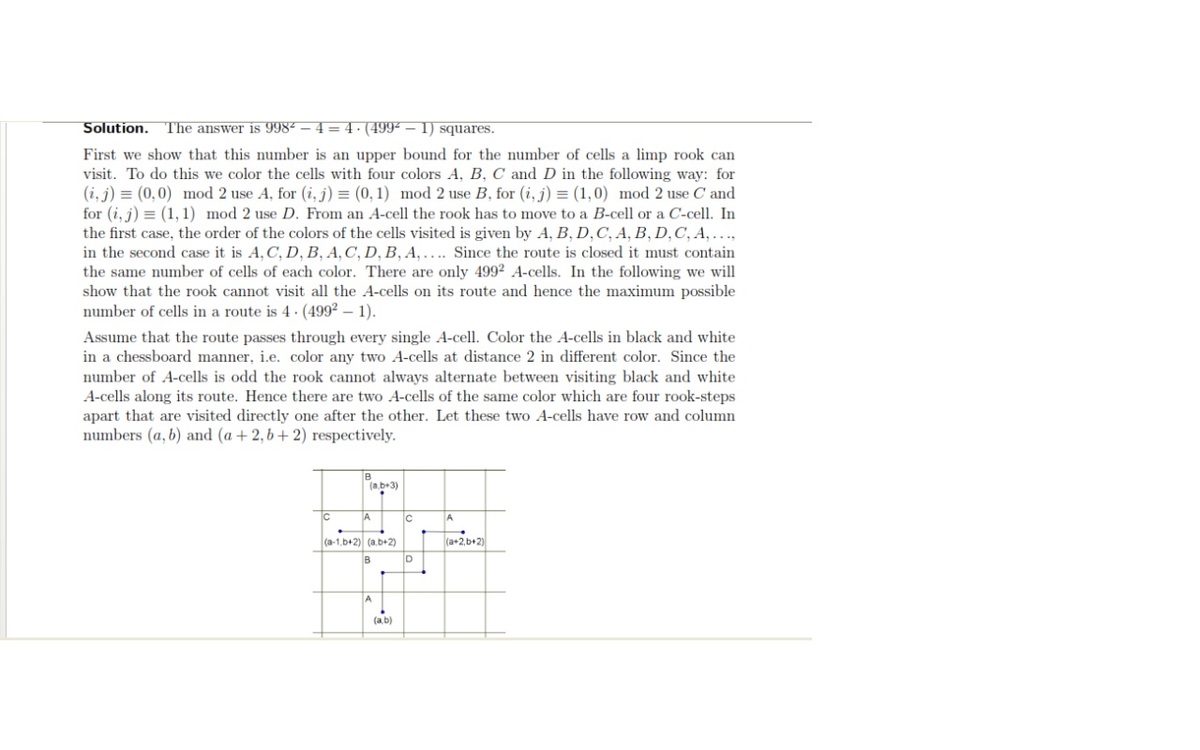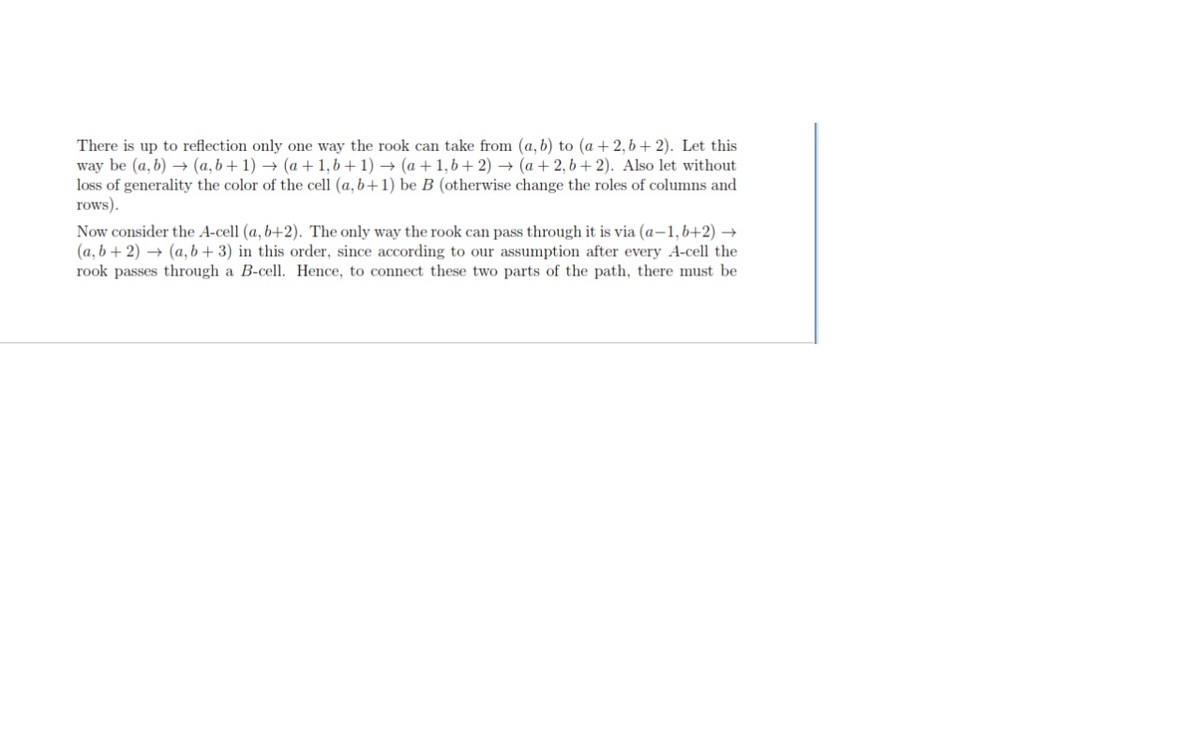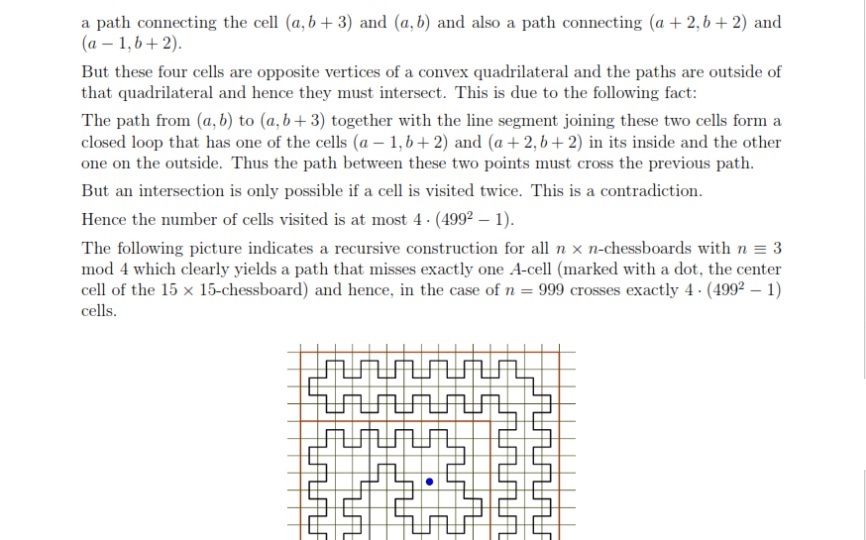IMO Problem 5
 On a
board a limp rook can move in the following way:
From any square it can move to any of its adjacent squares, i.e. a square having
a common side with it, and every move must be a turn: i.e. the directions of
any two consecutive moves must be perpendicular. A non-intersecting route of
the limp rook consists of a sequence of pairwise different squares that the limp
rook can visit in that order by an admissible sequence of moves. Such a nonintersecting
route is called cyclic, if the limp rook can, after reaching the last square of the route, move directly to the first square of the route and start over.
How many squares does the longest possible cyclic, non-intersecting route of a
limp rook visit?
On a
board a limp rook can move in the following way:
From any square it can move to any of its adjacent squares, i.e. a square having
a common side with it, and every move must be a turn: i.e. the directions of
any two consecutive moves must be perpendicular. A non-intersecting route of
the limp rook consists of a sequence of pairwise different squares that the limp
rook can visit in that order by an admissible sequence of moves. Such a nonintersecting
route is called cyclic, if the limp rook can, after reaching the last square of the route, move directly to the first square of the route and start over.
How many squares does the longest possible cyclic, non-intersecting route of a
limp rook visit?
This problem is from the IMO.This problem is from the IMO.This problem is part of this set .
The answer is 996000.
This section requires Javascript.
You are seeing this because something didn't load right. We suggest you, (a) try
refreshing the page, (b) enabling javascript if it is disabled on your browser and,
finally, (c)
loading the
non-javascript version of this page
. We're sorry about the hassle.


